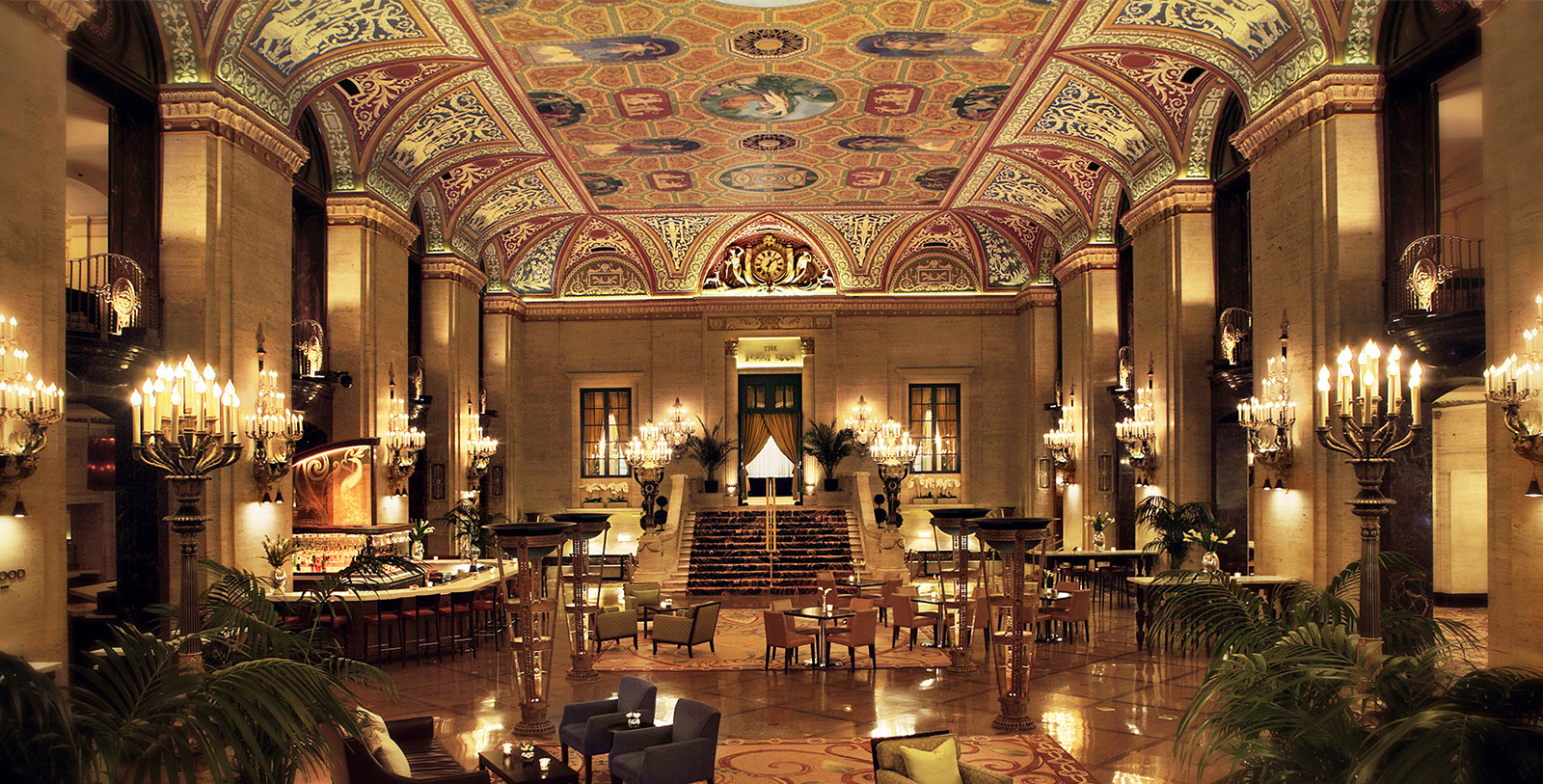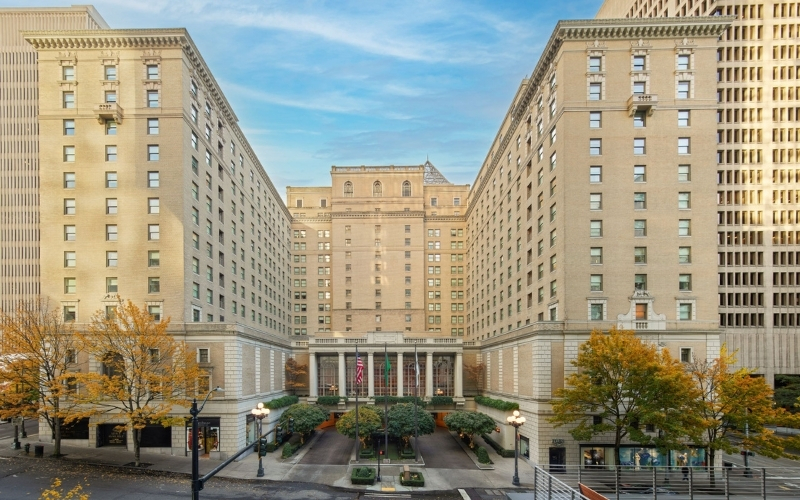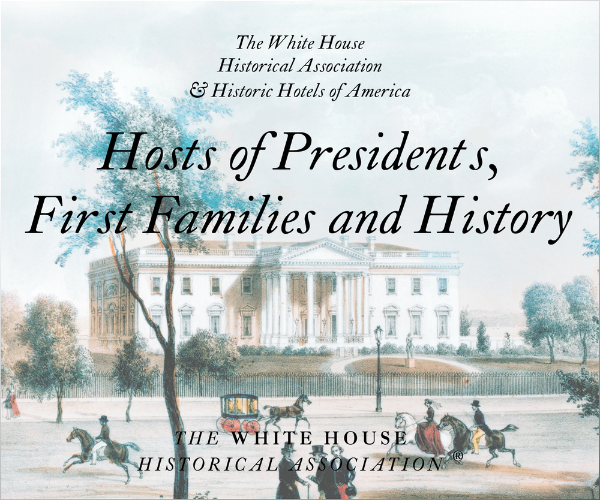A prestigious member of Historic Hotels of America, the iconic Palmer House, A Hilton Hotel first opened its doors on September 26, 1871. Since then, the hotel has welcomed millions of guests, hosted legendary entertainers and celebrated countless birthdays, weddings and milestones. Just in the past two months, Palmer House has unveiled a brand-new indoor swimming pool following a $2.2 Million renovation and introduced Lockwood Express, a grab and go concept that includes daily baked pastries, Lavazza coffee, a selection of warm artesian meals, and even small batch cocktails for travelers on-the-go. Even after 150 years, the Palmer House continues to be a landmark of Chicago.
In honor of the hotel's Sesquicentennial, a state and city proclamation dedication from the offices of Governor J.B Pritzker Office and Mayor Lori Lightfoot.
“Through the years, Palmer House, a Hilton Hotel has been a pinnacle of resilience, ingenuity, a haven of inclusivity, and instrumental to the growth of Chicago. As a hotel built on love, Palmer House remains engrained into the city of Chicago, serving as a beacon of light following a challenging year,” said Hilton Area General Manager, Dean Lane. “With the demise of the original building due to the Great Chicago Fire of 1871, undeterred Potter Palmer secured the largest hotel real estate loan of its day and rebuilt the second Palmer House. Proving its staying power through the decades, Palmer House has become a hotel of many firsts, famously the first hotel to install the original telephone system, sometimes accommodating 2,700 calls per hour. Palmer House is the first fireproof hotel, birthplace of the original chocolate fudge brownie, the first to employ the vertical steam lift, which would later become the elevator, the first hotel to use the lightbulb, and home to the first-ever Polaroids from the 1893 World’s Fair. We take pride in preserving our hotel’s history and are honored to share our story on the hotel’s 150th year anniversary.”
Built on Love
It started with a love story. Potter Palmer, a Chicago businessman who helped develop Chicago’s iconic State Street, was introduced by his former business partner, Marshall Field, to Bertha Honoré Palmer, a young socialite. The two began an incredible courtship and to show his love and admiration for Bertha, he gifted her with one of the most extravagant wedding gifts ever – the Palmer House hotel.
The Crown Jewel of the Building - The Lobby
Shortly after befriending the famous artist Claude Monet in France, Bertha began decorating the Palmer House with paintings and other pieces inspired by her French heritage. She eventually accumulated over 220 paintings, the largest collection of impressionist art outside of France, and willed them to the Art Institute of Chicago – including numerous Monets and Renoirs.
She commissioned French muralist Louis Pierre Rigal to compose 21 unique frescoes on the lobby’s magnificent domed ceiling. The murals honored Greek mythology, including Aphrodite the goddess of love; Apollo the god of music; and Pluto the god of the underworld. The lobby ceiling has been restored inch by painstaking inch by Lido Lippi, who’d undertaken a similar project for the Sistine Chapel. To restore the ceiling of Palmer House, he worked flat on his back raised on scaffolding throughout the night while listening to Mozart.
The Italian marble staircase that takes you to the Empire Room is one of only two constructed in this particular manner; the other is in London’s St. Paul’s Cathedral. Louis Comfort Tiffany designed the 24-karat gold-dipped chandeliers that grace the ceiling, as well as the majestic Winged Angels, at 1.25 tons they were the largest bronze statues he’d ever produced.
The Birthplace of the Brownie
The brownie was created in the Palmer House Kitchen, specifically under the direction of Bertha Palmer to be served at the World’s Columbian Exposition, or Chicago World’s Fair, in 1893. Bertha, who was president of the Ladies Board for Managers for Exposition, was creating box lunches for the Women’s Pavilion. She asked her chef to prepare a dessert, something more unique than a piece of pie or cake, and something that would be easy to eat and transport. She suggested he make something like a cookie, but denser and more decadent with chocolate. The recipe Bertha and the chef came up with is still used today. To celebrate the sesquicentennial, the property is launching a Bertha Brownie Latte a playful spin on the original fudge brownie, available at Lockwood Express.
In addition to the brownie, throughout its history, Palmer House has become a hotel of many firsts, including: The first hotel to install the original telephone system, the first hotel to use a lightbulb, and the first hotel to use a vertical steam lift, which would later become the elevator.
Presidential Ties
Guests at Palmer House, a Hilton Hotel, join a long list of people who have spent a night at 17 East Monroe Street. Every sitting president since Ulysses S. Grant (with the exception of George W. Bush) has rested their head on a pillow at Palmer House, and Presidents James Garfield, Grover Cleveland, William Jennings Bryan, William McKinley, Ronald Regan, Bill Clinton and Barack Obama have all campaigned at the property.
The history of Grant and the Palmers was intertwined. President Grant was married to Bertha Palmer’s sister Ida, and in 1879, the hotel hosted the “Greatest Banquet in American History” to commemorate the return of the President’s trip from around the world. A gala was hosted for 500 dignitaries and Civil War heroes, including General William Sherman and Phillip Sheridan, with Mark Twain, Potter’s friend, as master of ceremonies.
The Center of Chicago’s Social Scene
Designed in the style of the High French Empire, the room’s staircase, statuary and entry pay homage to the Paris Opera. The grand staircase catches the eye when entering the hotel, a sign that something extraordinary is taking place in the room. Originally the hotel’s fine dining restaurant, The Empire Room added dancing in 1933 during the World’s Fair and it was a quick crowd-pleaser. When Conrad Hilton purchased the hotel in 1945, he suggested entertainment be escalated to full cabaret reviews, with as many as three opening acts, including the Merriel Abbott dancers. While today a destination for weddings and gala events, the Empire Room has hosted several legendary entertainers.
How to Celebrate the 150th Anniversary
Palmer House has many activations to celebrate its sesquicentennial throughout the year.
Fudge It – It’s Friday at Five: Every first Friday of the month, Lockwood Lobby Bar will host a 150-minute Brownie Happy Hour, offering each guest who purchases a cocktail or beverage, a complimentary brownie.
If These Walls Could Talk Self-Guided Engage & Explore Tour: Discover lesser-known facts and fun that make for Instagram-able moments. Complete the challenge, share photos from the tour with the front desk for a chance to win the gift of the month.
Sesquicentennial Wedding Package: The special couple will dine on Bertha Palmer’s china, valued at $30,000 per place setting, used at the “Greatest Banquet in American History” honoring Ulysses S. Grant.
View 150 years of history through images.
Celebrate the rich history of the Palmer House, a Hilton Hotel, and book your stay!
Read more of Hospitality Net's coverage of the Palmer House's Sesquicentennial here and here.
About Historic Hotels of America®
Historic Hotels of America is the official program of the National Trust for Historic Preservation for recognizing and celebrating the finest Historic Hotels. Historic Hotels of America has more than 300 historic hotels. These historic hotels have all faithfully maintained their authenticity, sense of place, and architectural integrity in the United States of America, including 44 states, the District of Columbia, the U.S. Virgin Islands, and Puerto Rico. Historic Hotels of America is comprised of mostly independently owned and operated historic hotels. More than 30 of the world’s finest hospitality brands, chains, and collections are represented in Historic Hotels of America. To be nominated and selected for membership into this prestigious program, a hotel must be at least 50 years old; has been designated by the U.S. Secretary of the Interior as a National Historic Landmark or listed in or eligible for listing in the National Register of Historic Places; and recognized as having historic significance.






























